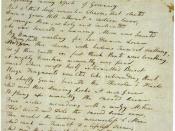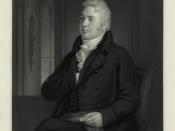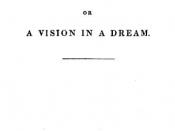In the poem Kubla Khan by Samuel Coleridge, language is used to convey images from Coleridge's imagination. This is done with the use of vocabulary, imagery, structure, use of contrasts, rhythm and sound devices such as alliteration and assonance.
By conveying his imagination by using language, the vocabulary used by Coleridge is of great importance. The five lines of the poem Kubla Khan sound like a chant or incantation, and help suggest mystery and supernatural themes of the poem. Another important theme of the poem is that of good versus evil. The vocabulary used throughout the poem helps convey these themes in images to the reader. In the first two lines, Coleridge describes the 'pleasure dome' in Xanadu. In Xanadu did Kubla Khan a stately pleasure dome decree Kubla Khan did not merely order, but decree that a 'stately pleasure dome' be built. This dome is evidence of how unnatural the place of Xanadu is, it has a ruler who ignores the unpleasantness that can be found in life.
The use of vocabulary challenges and teases the imagination into seeing what he, Coleridge saw in his dream. In Xanadu, there are not small streams, but 'sinuous rills' and wall and towers do not enclose the gardens but are 'girdled round'. Coleridge's use of language and vocabulary helps to convey the extent of his imagination.
In the poem Kubla Khan, imagery is also important for Coleridge to convey his imagination to the reader. There are images of paradise throughout the poem that are combined with references to darker, more evil places. On example of this is the 'demon lover' that has bewitched the woman. Coleridge's image of the 'dome of pleasure' is mystical, contradicting the restrictions of realism. Xanadu is also a savage and ancient place where pure good and...


